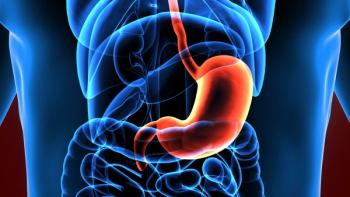
Edoxaban Monotherapy Outperforms Dual Antithrombotic Therapy for Atrial Fibrillation, Stable Coronary Artery Disease
Edoxaban monotherapy lowered the risk of adverse outcomes, including death from any cause, myocardial infarction, stroke, and systemic embolism at 12 months compared to the dual antithrombotic therapy approach in patients with atrial fibrillation and stable coronary artery disease.
Trial results show that edoxaban monotherapy reduced the risk of the primary net clinical outcome compared to dual antithrombotic therapy comprised of edoxaban plus a single antiplatelet medication over 12 months in patients with atrial fibrillation and stable coronary artery disease.1,2 Findings from the Phase IV EPIC-CAD trial (NCT03718559), published by The New England Journal of Medicine, show edoxaban monotherapy lowered the risk of adverse outcomes, including death from any cause, myocardial infarction, stroke, and systemic embolism at 12 months compared to the dual antithrombotic therapy approach.
“In this multicenter, randomized trial that assessed two long-term antithrombotic strategies in patients with atrial fibrillation and stable coronary artery disease, the risk of the primary net clinical outcome—a composite of death from any cause, myocardial infarction, stroke, systemic embolism, unplanned urgent revascularization, or major bleeding or clinically relevant nonmajor bleeding—was lower with standard-dose edoxaban monotherapy than with dual antithrombotic treatment with edoxaban plus a single antiplatelet agent,” the study authors wrote. “This result appeared to be driven mainly by a lower incidence of bleeding events. The incidence of ischemic events and mortality appeared to be similar in the trial groups.”1
Edoxaban is a factor Xa inhibitor indicated to lower the risk of stroke and systemic embolism in patients with nonvalvular atrial fibrillation. As a selective inhibitor of FXa, edoxaban does not require antithrombin III for antithrombotic activity.3
The multicenter, open-label, adjudicator-masked trial randomly assigned 524 patients to the edoxaban monotherapy cohort and 516 patients to the dual antithrombotic therapy cohort at 18 sites in South Korea. The trial’s primary outcome was a composite of death from any cause, myocardial infarction, stroke, systemic embolism, unplanned urgent revascularization, and major bleeding or clinically relevant nonmajor bleeding at 12 months, with secondary outcomes that included composite of major ischemic events and the safety outcome of major bleeding or clinically relevant nonmajor bleeding.
Patients in the trial had a mean age of 72.1 years, 22.9% were women, and the mean CHA2DS2-VASc score was 4.3. After 12 months, investigators noted a primary outcome event in 34 patients (Kaplan–Meier estimate, 6.8%) in the edoxaban monotherapy cohort and 79 patients (16.2%) in the dual antithrombotic therapy cohort (hazard ratio, 0.44; 95% confidence interval [CI], 0.30 to 0.65; P<0.001). Cumulative incidence of major ischemic events at 12 months was found to be similar across both cohorts. Twenty-three patients in the edoxaban monotherapy group experienced major bleeding or clinically relevant nonmajor bleeding (Kaplan–Meier estimate, 4.7%) compared to 70 patients (14.2%) in the dual antithrombotic therapy cohort (hazard ratio, 0.34; 95% CI, 0.22 to 0.53).
“With respect to the primary outcome, the treatment effect of edoxaban monotherapy as compared with dual antithrombotic therapy appeared to be consistent across all prespecified subgroups,” the study authors wrote. “In a post hoc analysis, the treatment effect with respect to a composite of major ischemic events and a composite of major bleeding or clinically relevant nonmajor bleeding was similar across all prespecified subgroups. Findings for the primary outcome were consistent irrespective of past use of antithrombotic therapy, the appropriateness of the edoxaban dose, and the combination of antiplatelet agents.”1
In terms of safety, edoxaban monotherapy was found superior to dual antithrombotic therapy in the cumulative incidence of net adverse clinical events at 12 months.
“Our approach provided a clinical benefit of fewer bleeding events without an apparent difference in major ischemic events between the trial groups. However, none of the available trials, including the EPIC-CAD trial, were designed to assess meaningful differences in clinically relevant ischemic events and mortality,” the study authors concluded. “Nonetheless, given that none of the contemporary trials that assessed the appropriate antithrombotic strategy in patients with atrial fibrillation and coronary artery disease enrolled a large enough sample to detect a meaningful reduction in the incidence of ischemic events, conducting new trials with a sufficient sample size to determine the true efficacy of an antithrombotic strategy would not be feasible.”1
References
1. Soo Cho, M., et al. Edoxaban Antithrombotic Therapy for Atrial Fibrillation and Stable Coronary Artery Disease. Published September 1, 2024. N Engl J Med 2024. DOI: 10.1056/NEJMoa2407362.
2. Edoxaban Versus Edoxaban With antiPlatelet Agent In Patients With Atrial Fibrillation and Chronic Stable Coronary Artery Disease (EPIC-CAD). ClinicalTrials.gov. June 10, 2024. Accessed September 4, 2024.
3. FDA.gov. Website.
Newsletter
Stay current in clinical research with Applied Clinical Trials, providing expert insights, regulatory updates, and practical strategies for successful clinical trial design and execution.






.png)



.png)



.png)
.png)
